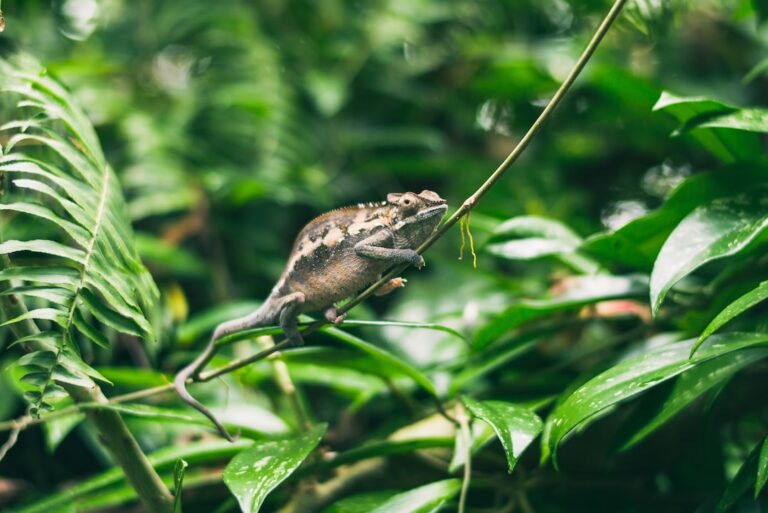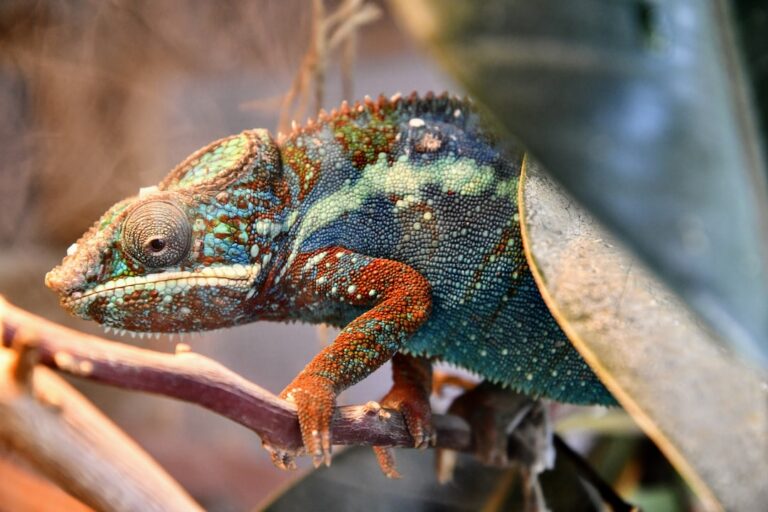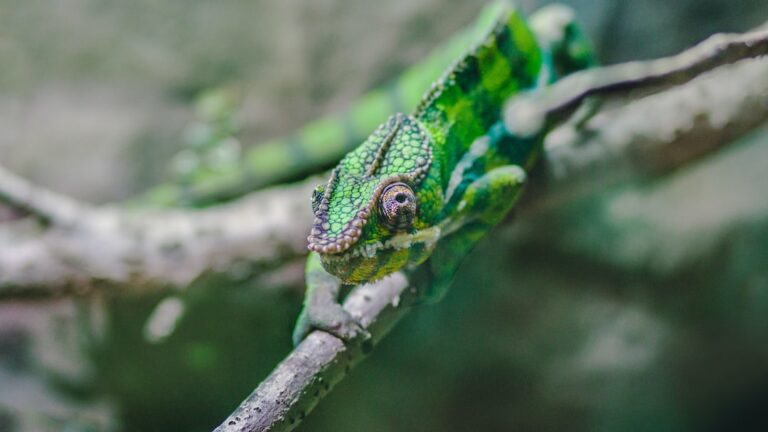Can Chameleons Die From Stress?
Chameleons are fascinating creatures known for their ability to change color and blend into their surroundings. They have unique physiology that allows them to adapt to their environment and survive in various habitats. Understanding the physiology of chameleons is crucial for providing them with the proper care and reducing stress levels.
Table of Contents
Understanding the Physiology of Chameleons
Chameleons have a unique anatomy that sets them apart from other reptiles. They have independently moving eyes, which allows them to have a 360-degree field of vision. Their feet are adapted for climbing, with specialized toes that enable them to grip onto branches and surfaces. Chameleons also have a prehensile tail that they can use for balance and support.
The physiology of chameleons plays a significant role in their behavior and stress levels. For example, their ability to change color is not just for camouflage, but also for communication and thermoregulation. Chameleons change color to express their emotions, attract mates, or regulate their body temperature. Understanding these behaviors can help identify signs of stress in chameleons.
The Impact of Stress on Chameleons
Stress can have a significant impact on the physical and mental well-being of chameleons. When chameleons are stressed, their immune system weakens, making them more susceptible to diseases and infections. Stress can also lead to decreased appetite, weight loss, and reproductive issues.
Mentally, stress can cause chameleons to become anxious or aggressive. They may exhibit abnormal behaviors such as excessive hiding, pacing, or biting. Chronic stress can also lead to depression and a decreased quality of life for these animals.
The Signs of Stress in Chameleons
It is essential for chameleon owners to be able to recognize the signs of stress in their pets. Some common signs include changes in color, behavior, and appetite. Chameleons may become darker or lighter in color when they are stressed. They may also exhibit aggressive behaviors, such as hissing or biting, or become excessively shy and hide for long periods.
Changes in appetite can also indicate stress in chameleons. They may refuse to eat or show a decreased interest in food. Weight loss can occur if the stress is prolonged and not addressed.
Common Causes of Stress in Chameleons
There are several common causes of stress in chameleons that owners should be aware of. One of the most significant factors is improper husbandry. Chameleons require specific temperature, humidity, and lighting conditions to thrive. If these conditions are not met, it can lead to stress and health issues.
Handling can also be a source of stress for chameleons. They are delicate creatures that do not enjoy being handled frequently or roughly. Improper handling can cause physical injuries and emotional distress.
Environmental factors such as noise, vibrations, and the presence of other animals can also stress chameleons. They are solitary creatures that prefer a quiet and calm environment.
How to Reduce Stress in Chameleons
Reducing stress in chameleons is crucial for their overall well-being. Proper handling techniques should be followed to minimize stress during interactions with these animals. It is important to handle them gently and avoid excessive handling.
Providing a comfortable environment is also essential for reducing stress. This includes maintaining the proper temperature, humidity, and lighting conditions in their enclosure. Chameleons should have access to hiding spots and branches for climbing and perching.
Minimizing disturbances in their environment can also help reduce stress levels. This includes keeping noise levels low and avoiding sudden movements or changes in their surroundings.
The Role of Diet in Chameleon Stress Levels
Diet plays a significant role in chameleon stress levels. A balanced diet is essential for their overall health and well-being. Chameleons are insectivores, meaning they primarily eat insects. It is important to provide a variety of insects to ensure they receive all the necessary nutrients.
Feeding live insects is recommended as it provides mental stimulation for chameleons. They enjoy hunting and capturing their prey, which can help reduce stress levels. It is also important to dust the insects with calcium and vitamin supplements to prevent nutritional deficiencies.
The Importance of Proper Lighting and Temperature for Chameleons
Proper lighting and temperature are crucial for chameleon health and stress levels. Chameleons require UVB lighting to synthesize vitamin D3, which is essential for calcium absorption. Without adequate UVB lighting, chameleons can develop metabolic bone disease, which can be debilitating and even fatal.
Temperature regulation is also vital for chameleons. They require a basking spot with a higher temperature to thermoregulate their body. The rest of the enclosure should have a cooler temperature to allow them to cool down when needed.
The Effect of Environmental Factors on Chameleon Stress
Environmental factors such as noise and the presence of other animals can significantly impact chameleon stress levels. Chameleons are solitary creatures that prefer a quiet and calm environment. Loud noises or constant disturbances can cause them to become stressed and anxious.
The presence of other animals, such as dogs or cats, can also stress chameleons. They may feel threatened or unsafe in the presence of these animals, leading to increased stress levels.
The Risks of Chronic Stress in Chameleons
Chronic stress can have severe long-term effects on chameleon health. It weakens their immune system, making them more susceptible to diseases and infections. Chronic stress can also lead to weight loss, decreased appetite, and reproductive issues.
Mentally, chronic stress can cause chameleons to become depressed and exhibit abnormal behaviors. They may lose interest in their surroundings and become withdrawn. Chronic stress can significantly impact their quality of life and overall well-being.
When to Seek Veterinary Care for a Stressed Chameleon
It is important to seek veterinary care for a stressed chameleon if the signs of stress persist or worsen. Additionally, if the chameleon exhibits signs of illness or injury, it is crucial to consult a veterinarian. Signs of illness can include lethargy, loss of appetite, abnormal feces, or respiratory issues.
A veterinarian will be able to assess the chameleon’s health and provide appropriate treatment if necessary. They can also offer guidance on how to reduce stress levels and improve the chameleon’s overall well-being.
Proper care and understanding of chameleon physiology are essential for reducing stress levels in these unique creatures. By providing a comfortable environment, proper handling, and a balanced diet, chameleons can thrive and live a healthy life. Recognizing the signs of stress and seeking veterinary care when necessary is crucial for their overall well-being. With proper care, chameleons can live long and fulfilling lives as fascinating pets.
If you’re interested in the well-being of reptiles, you might also want to check out this informative article on Can Chameleons Smell Things?. It delves into the fascinating world of chameleons and explores their unique sense of smell. Discover how these incredible creatures use their olfactory abilities to navigate their environment and communicate with others. Understanding the sensory capabilities of chameleons can provide valuable insights into their behavior and overall health.






